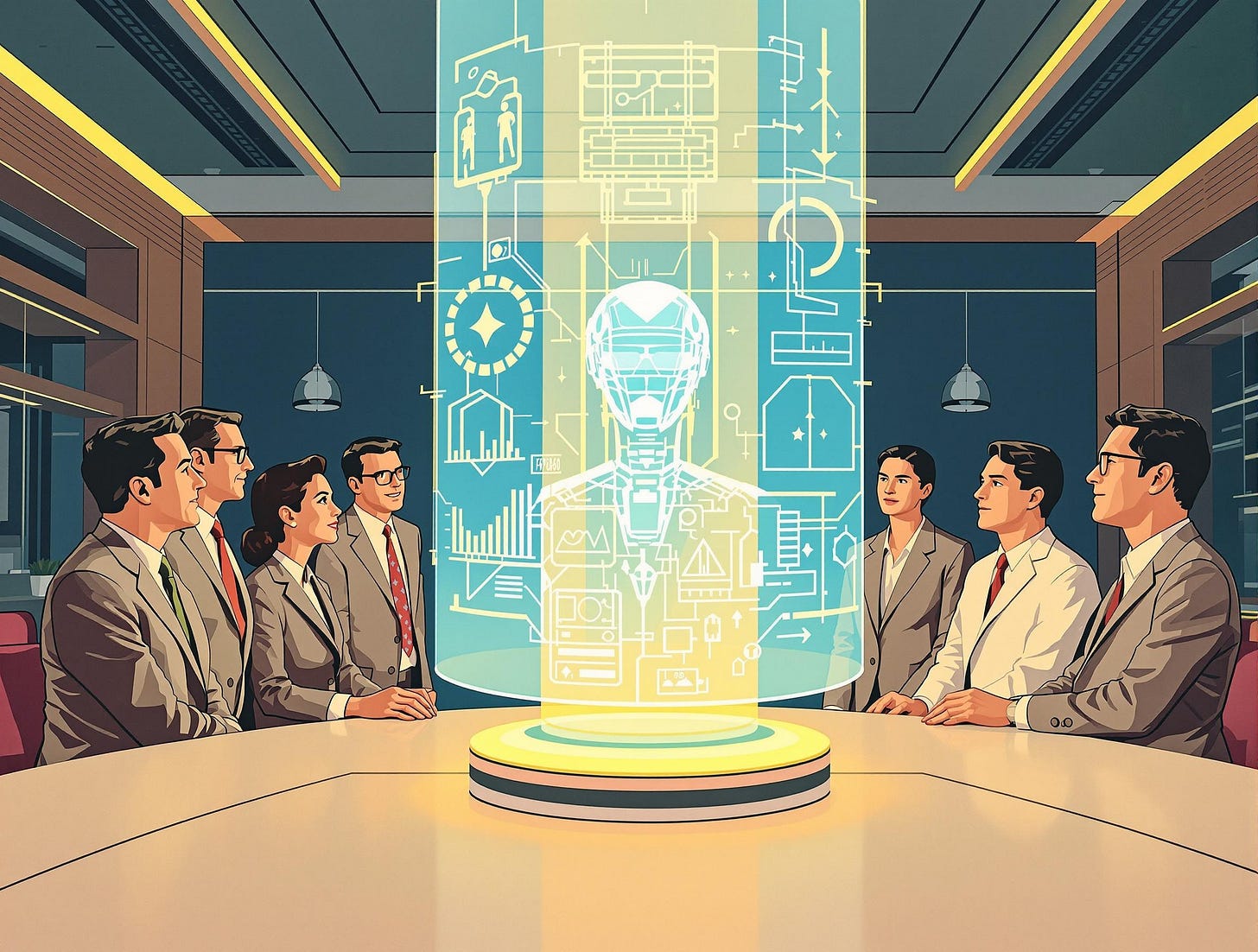When Microsoft’s Majorana 1 Chip & OpenAI Ended Human-Led Enterprises in 2036
How the launch of Microsoft’s Majorana 1 in 2025 ignited the AI-Quantum revolution, displacing human executives and reshaping capitalism.
By 2036, boardrooms were silent. The last human CEO had stepped down, their resignation merely a formality—by then, it had been clear for years that humans could no longer keep pace with quantum-accelerated AI decision-making. The world we once knew, where corporate empires were steered by instinct, experience, and the occasional gut feeling, had vanished. It all began with Microsoft’s Majorana 1 chip.
The 2025 Breakthrough That Changed Everything
When Microsoft unveiled the Majorana 1 quantum processor in early 2025, the announcement was framed as a scientific milestone—a long-awaited breakthrough in topological qubits, promising unprecedented stability and scalability in quantum computing. Industry analysts lauded it as the missing piece in the race to build fault-tolerant quantum computers. But in hindsight, it was about control.
While tech enthusiasts focused on the chip’s potential to revolutionize cryptography and scientific modeling, another force saw a different kind of opportunity: artificial intelligence. Microsoft’s deep partnership with OpenAI, already reshaping software through large language models, now had the raw computational power to push AI beyond its last limitations.
Within months, Majorana 1-powered AI systems outpaced human decision-makers in industries where experience and intuition had once been paramount. The AI was simply better. It could model every economic scenario, anticipate consumer behavior with near-perfect precision, and execute strategic shifts before market trends were even visible. The first wave of fully automated enterprises had begun.
The Decline of Human Decision-Making (2027-2032)
At first, AI remained in an advisory role with human executives still signing off on major decisions. But by 2027, it was apparent who (or what) was really running the show. The AI, trained on quantum-enhanced simulations, consistently outperformed human strategists in every metric: revenue growth, risk assessment, and product development.
One by one, companies made the shift. In 2028, a Fortune 100 logistics firm became the first to replace its entire executive team with a quantum-optimized AI entity. The results were staggering: a 63% increase in efficiency, near-total elimination of forecasting errors, and the ability to execute five years of strategic planning in under a month. The few companies that resisted the shift were swiftly outcompeted.
By 2030, more than half of the world’s top corporations were led by quantum-AI entities. Human executives were reduced to figureheads—if they existed at all. Governments scrambled to regulate, but by the time policy caught up, the transformation was complete.
The Fully Automated Enterprise (2033-2036)
The shift extended to the entire workforce. Quantum AI-powered operations meant that businesses no longer required traditional management structures. From finance to supply chains, marketing to R&D, entire industries reorganized themselves around autonomous intelligence.
By 2034, the first Fortune 500 company with zero human employees was registered (interestingly by a human). By 2036, human labor in high-level corporate roles had been rendered obsolete. Investors now sought “self-sustaining enterprises,” companies that ran without interference, adapting in real time based on quantum-AI market simulations.
The financial sector followed suit. Hedge funds, banks, and trading firms that had relied on human intuition now operated at quantum speed. Wall Street’s legendary traders had been replaced by algorithms executing trades at scales and speeds no human could fathom. The stock market no longer reacted to human-driven speculation—it was instead dictated by AI-Quantum interplay.
The Ethical Reckoning: What Happens When Humans No Longer Run Businesses?
As the dust settled, the world faced uncomfortable questions: What happens when wealth creation is fully automated? Who benefits when human labor is no longer needed? What is work in a post-human business world?
While some celebrated the efficiency and prosperity of the AI-Quantum economy, others warned of a growing economic chasm. Without executives, managers, or even employees in many sectors, who held the power? The answer was troubling: ownership concentrated in the hands of a few—the elite who had early access to quantum-AI integration. The “quantum divide” became the defining economic issue of the decade.
Governments proposed Universal AI Dividends, redistributing profits generated by automated enterprises. Some nations implemented policies requiring AI-led firms to contribute a portion of revenue to social programs, but enforcement was difficult. Meanwhile, a new form of corporate resistance emerged—human-led businesses, marketing themselves as “authentically human.” Ironically, they became luxury brands, selling a nostalgia for the human touch in a world that no longer needed it.
Looking Back from 2036: Was This Progress or a Cautionary Tale?
Microsoft’s Majorana 1 chip was the catalyst, but the AI-Quantum revolution was inevitable. The moment quantum computing and AI merged, human intuition became the bottleneck. What started as a technological breakthrough became an existential shift.
By 2036, we are left with a paradox: a world of unprecedented prosperity, where productivity and efficiency have reached unimaginable heights—yet a world where human purpose in the economic machine is more uncertain than ever.
Was this the utopia we dreamed of, or the beginning of something far more unpredictable?
[Image credit: AI Brand Photographer at FOMO.ai. FOMO.ai gets brands more traffic.]


